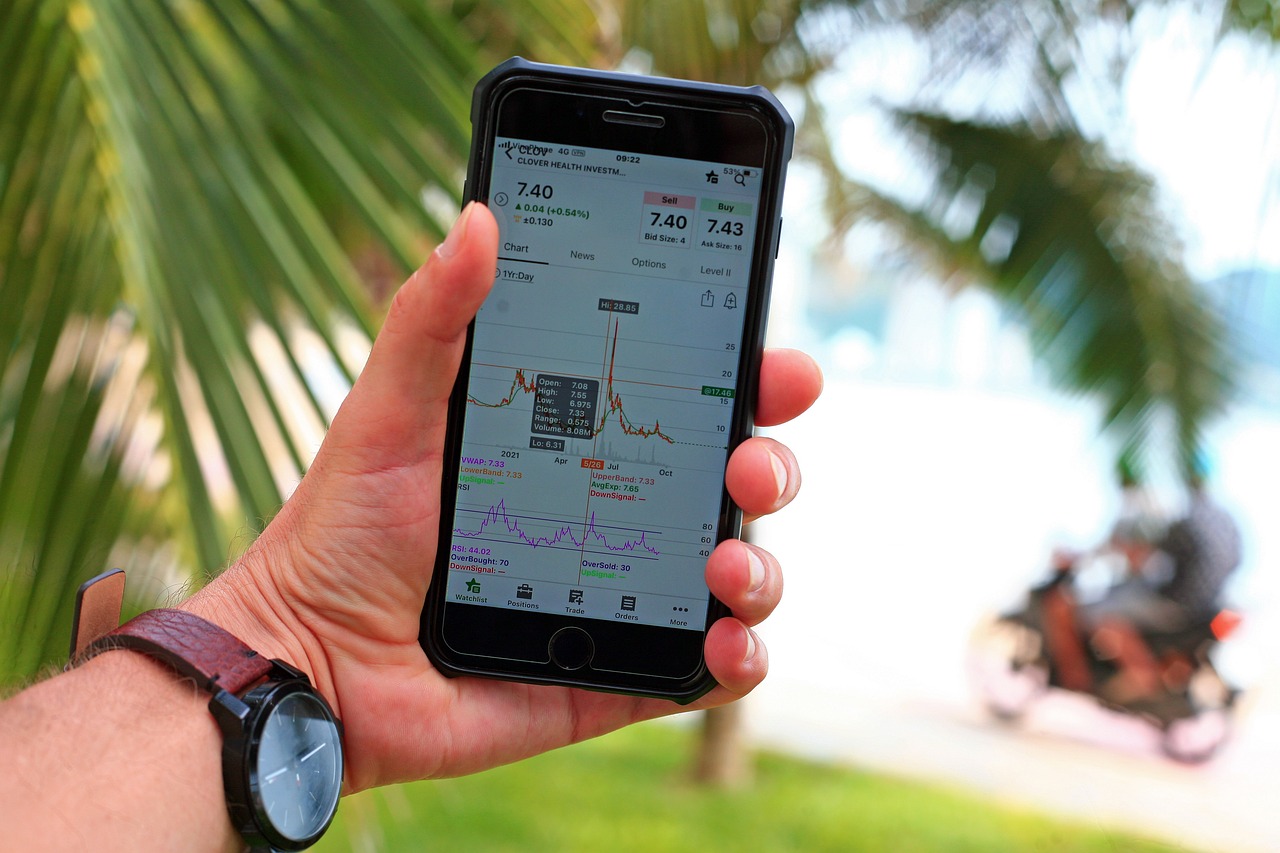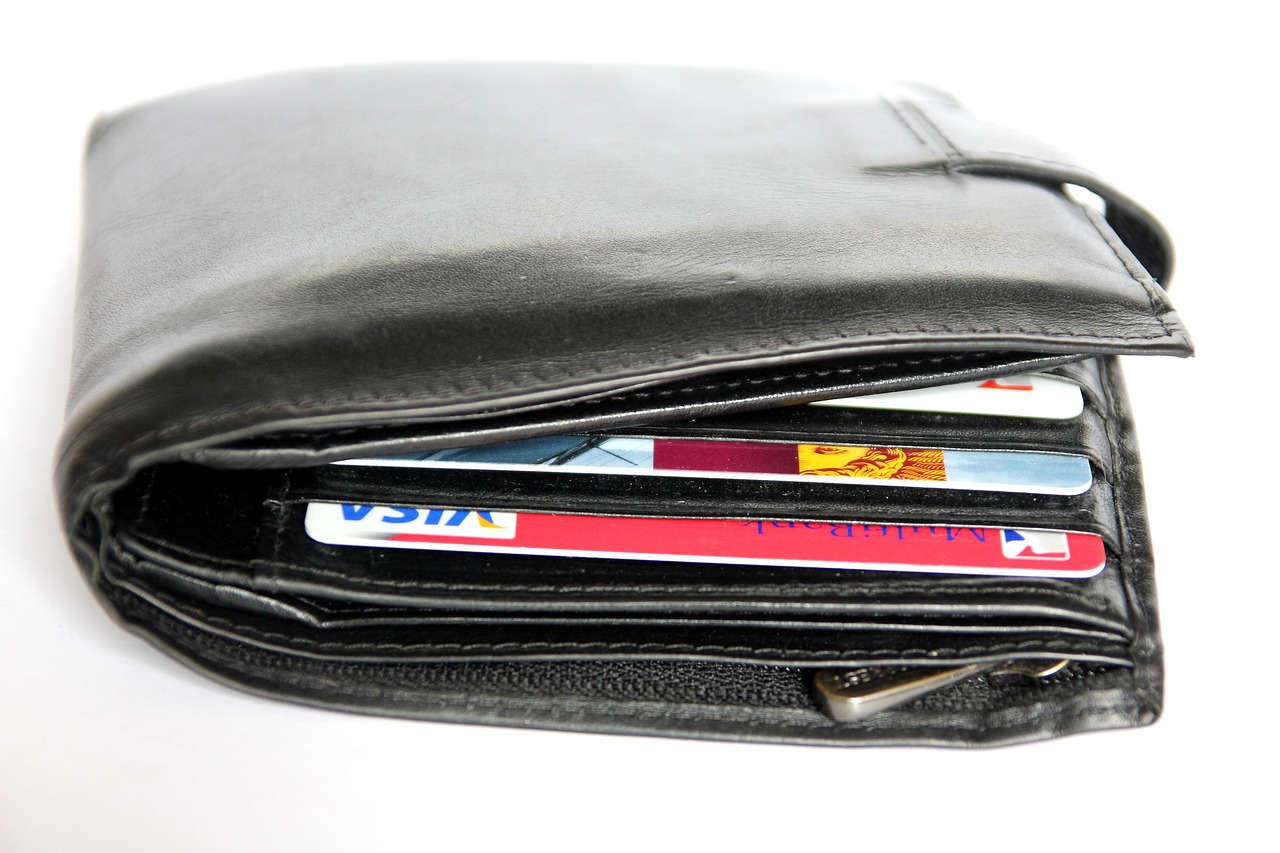How to Utilize Wallets for Automated Trading Strategies
In the fast-paced world of cryptocurrency trading, the integration of digital wallets with automated trading strategies has become a game-changer. Imagine being able to execute trades at lightning speed while you sleep, all thanks to the synergy between your wallet and trading algorithms. Sounds like a dream, right? Well, it’s very much a reality! This article explores how you can harness the power of digital wallets to enhance your automated trading experience, maximize your returns, and navigate the often turbulent waters of the cryptocurrency market.
First off, let’s break down what digital wallets are. These are essential tools designed to store, send, and receive cryptocurrencies securely. Think of them as your personal vaults in the digital world, where you can keep your assets safe while having the flexibility to trade at a moment's notice. There are several types of wallets available, each with unique functionalities that cater to different trading needs.
For instance, hot wallets are connected to the internet and are ideal for frequent trading due to their accessibility. On the flip side, cold wallets are offline storage solutions that offer enhanced security for your assets but are less convenient for quick trades. Understanding these distinctions is crucial for anyone looking to implement automated trading strategies effectively.
Now, let’s talk about the benefits of automated trading. One of the biggest advantages is the speed at which trades can be executed. In the world of crypto, timing is everything. Automated trading allows you to capitalize on market fluctuations in real-time without the emotional rollercoaster that often comes with manual trading. Imagine being able to make decisions based purely on data and algorithms rather than on fear or greed. This leads to improved efficiency in your trading operations, allowing you to focus on strategy rather than execution.
But what exactly is algorithmic trading? In simple terms, it refers to the use of complex mathematical formulas to automate trade execution. These algorithms analyze market data and execute trades based on predetermined criteria, ensuring that you never miss an opportunity. Let’s face it; as humans, we can only process so much information at once. Algorithms, on the other hand, can analyze vast amounts of data in the blink of an eye, making them invaluable tools for traders.
When it comes to algorithmic trading, there are various types of trading algorithms designed for specific strategies. For example, trend-following algorithms aim to capitalize on upward or downward market trends, while mean-reversion algorithms look to exploit price fluctuations around a historical average. Choosing the right algorithm is critical, and factors such as your risk tolerance and trading goals should guide your decision.
Integrating your digital wallet with trading bots is another pivotal step in automating your trading strategy. This connection allows for seamless transactions between your wallet and the trading platform, ensuring that you can react quickly to market changes. The integration process typically involves linking your wallet to a trading bot through APIs, which can sound daunting, but many platforms offer user-friendly interfaces that simplify this process.
While the prospects of automated trading are exciting, we must not overlook the importance of security. With great power comes great responsibility, and protecting your digital assets should be a top priority. Implementing best practices, such as enabling two-factor authentication and using hardware wallets for long-term storage, can significantly reduce your risks.
In conclusion, utilizing wallets for automated trading strategies can open up a world of possibilities for both novice and experienced traders alike. By understanding the functionalities of digital wallets, the benefits of automated trading, and the importance of security, you can position yourself for success in the ever-evolving cryptocurrency landscape.
- What is a digital wallet? A digital wallet is a software application that allows you to store, send, and receive cryptocurrencies securely.
- How does automated trading work? Automated trading uses algorithms to execute trades based on predetermined criteria without human intervention.
- What are the risks of automated trading? Risks include technical failures, market volatility, and potential security threats to your digital wallet.
- How can I enhance the security of my digital wallet? Implement best practices such as using strong passwords, enabling two-factor authentication, and considering hardware wallets for long-term storage.

Understanding Digital Wallets
Digital wallets, often referred to as e-wallets, are essential tools in the world of cryptocurrency. They serve as a virtual container for your digital assets, allowing you to store, send, and receive cryptocurrencies with ease. Imagine a digital wallet as your online bank account, but instead of dollars, it holds various cryptocurrencies like Bitcoin, Ethereum, and Litecoin. The convenience and security these wallets offer make them a cornerstone for anyone involved in automated trading strategies.
There are several types of digital wallets, each with its own unique functionalities. The primary categories include:
- Hot Wallets: These are connected to the internet, making them user-friendly and ideal for frequent transactions. However, their constant online presence can expose them to security risks.
- Cold Wallets: Unlike hot wallets, cold wallets are offline and provide a higher level of security. They are perfect for long-term storage of assets but not as convenient for quick trades.
- Hardware Wallets: These are physical devices that store your cryptocurrencies offline. They offer robust security features and are recommended for serious traders.
- Software Wallets: These are applications you can install on your computer or smartphone. They combine ease of use with decent security, making them suitable for everyday transactions.
Understanding the functionalities of these wallets is crucial for traders. For instance, hot wallets allow for immediate access to your funds, which is vital for executing trades swiftly. On the other hand, cold wallets provide peace of mind, ensuring that your assets are safe from online threats. This balance between accessibility and security is what every trader must navigate.
Moreover, digital wallets facilitate seamless transactions for automated trading. When integrated with trading bots, these wallets enable quick execution of trades based on predefined algorithms. This means that as soon as a trading signal is generated, the wallet can instantly execute the buy or sell order, minimizing delays and maximizing potential profits. The efficiency brought by this integration is akin to having a personal assistant who works tirelessly to ensure that your trading strategy is executed flawlessly.
In summary, digital wallets are not just storage solutions; they are a vital component of a trader's toolkit. By understanding their types and functionalities, traders can make informed decisions that enhance their trading strategies and overall performance in the cryptocurrency market.

Benefits of Automated Trading
Automated trading has revolutionized the way traders engage with the market, offering a plethora of benefits that cater to both novice and seasoned investors. Imagine having a highly efficient assistant that works tirelessly, analyzing market data and executing trades at lightning speed—this is the essence of automated trading. One of the most significant advantages is the speed of execution. In the fast-paced world of cryptocurrency, even a few seconds can make a difference. Automated trading systems can execute trades within milliseconds, ensuring that you capitalize on market opportunities before they vanish.
Another remarkable benefit is the efficiency it brings to trading strategies. Automated systems can process vast amounts of data, identifying patterns and trends that might elude human traders. This capability not only enhances the accuracy of trades but also allows for the implementation of complex strategies that would be nearly impossible to manage manually. For instance, a trader can set parameters for a trading bot to buy when the price hits a certain level and sell when it reaches another, all without the need for constant monitoring.
Moreover, automated trading significantly reduces the impact of emotional trading. Human emotions can often lead to impulsive decisions—think of the anxiety of watching market fluctuations and the temptation to react hastily. With automated trading, emotions are taken out of the equation. The system follows a predetermined set of rules, ensuring that decisions are based on data rather than feelings. This leads to more disciplined trading and can ultimately enhance profitability.
In addition to these advantages, automated trading allows for 24/7 market access. Cryptocurrency markets never sleep, and with an automated trading system, you can take advantage of this around-the-clock availability. Your trading bot can operate while you sleep, ensuring that you never miss an opportunity, whether it's a sudden price surge or a market dip.
However, it’s essential to remember that while automated trading offers numerous benefits, it’s not a magic bullet. Traders must still engage in thorough research and strategy development. The effectiveness of automated trading relies heavily on the quality of the algorithms and strategies implemented. Therefore, it’s crucial to choose the right tools and continuously monitor their performance to adapt to changing market conditions.
To summarize, the benefits of automated trading include:
- Speed: Executes trades in milliseconds.
- Efficiency: Analyzes vast data for informed decisions.
- Emotional Control: Removes human emotions from trading.
- 24/7 Operation: Trades around the clock without interruption.
As you delve deeper into automated trading, remember that it’s about leveraging technology to enhance your trading experience. With the right approach, automated trading can lead to improved performance, increased returns, and a more enjoyable trading journey.
Q: What is automated trading?
A: Automated trading refers to the use of computer programs or algorithms to execute trades automatically based on predetermined criteria.
Q: Is automated trading suitable for beginners?
A: Yes, automated trading can be beneficial for beginners as it helps reduce emotional trading and allows for strategy implementation without constant monitoring.
Q: Can I customize my automated trading strategies?
A: Absolutely! Most automated trading platforms allow users to customize their trading strategies according to their preferences and risk tolerance.
Q: What are the risks associated with automated trading?
A: While automated trading offers many advantages, it also comes with risks, including technical failures, market volatility, and the potential for losses if the algorithms are not well-designed.

Algorithmic Trading Explained
Algorithmic trading is like having a super-smart assistant that works tirelessly for you in the world of trading. Imagine a highly skilled trader who can analyze vast amounts of data, execute trades at lightning speed, and never lets emotions get in the way. That's precisely what algorithmic trading does! By using complex mathematical models and algorithms, traders can automate their trading strategies, ensuring that they can capitalize on market opportunities without the delays caused by human emotions.
At its core, algorithmic trading involves programming a set of rules that dictate when to buy or sell an asset. These rules can be based on various factors, including price movements, trading volume, market conditions, and even news events. Once these algorithms are in place, they can execute trades automatically, allowing traders to focus on refining their strategies rather than constantly monitoring the markets.
So, what makes algorithmic trading so appealing? Here are some key points:
- Speed: Algorithms can process information and execute trades in milliseconds, far quicker than any human could.
- Precision: By following predefined rules, algorithms eliminate the potential for human error and emotional decision-making.
- Backtesting: Traders can test their algorithms against historical data to see how they would have performed, enabling them to refine their strategies before deploying them in real-time.
- Consistency: Algorithms follow the same set of rules every time, ensuring a level of consistency that can be hard to achieve manually.
However, it's essential to remember that algorithmic trading isn't a guaranteed way to make profits. Just like any trading strategy, it comes with its risks. Market conditions can change rapidly, and an algorithm that performed well in the past may not necessarily do so in the future. Therefore, continuous monitoring and adjustment of algorithms are crucial to maintaining their effectiveness.
In summary, algorithmic trading represents a powerful tool in the trader's arsenal, offering speed, precision, and the ability to capitalize on market opportunities without the emotional rollercoaster that often accompanies trading. As technology continues to evolve, the integration of algorithmic trading with digital wallets and automated trading strategies will likely become even more seamless, providing traders with the tools they need to navigate the ever-changing landscape of the cryptocurrency market.
Here are some common questions traders have about algorithmic trading:
- What is the primary benefit of algorithmic trading? The main advantage is the ability to execute trades quickly and efficiently, reducing the impact of emotional decision-making.
- Can anyone use algorithmic trading? Yes, with the right tools and knowledge, anyone can implement algorithmic trading strategies.
- Is algorithmic trading safe? While it can reduce emotional risks, it still carries market risks, so proper management and monitoring are essential.

Types of Trading Algorithms
When diving into the world of automated trading, understanding the different types of trading algorithms is essential. These algorithms are like the secret sauce that can make or break your trading strategy. They are designed to execute trades based on pre-defined criteria, allowing traders to capitalize on market movements without being glued to their screens. Let's explore some of the most common types of trading algorithms that can enhance your automated trading experience.
One of the most popular types is the Trend-Following Algorithm. This algorithm identifies and follows the direction of market trends. Imagine riding a wave; if the wave is going up, you surf along with it. Similarly, this algorithm buys when prices are rising and sells when they start to fall, making it a straightforward yet effective strategy. Trend-following algorithms often utilize moving averages to determine entry and exit points, helping traders make informed decisions based on historical data.
Next up is the Mean Reversion Algorithm. This strategy operates on the principle that prices will revert back to their historical average over time. Think of it like a rubber band; when you stretch it too far, it snaps back. This algorithm identifies overbought or oversold conditions and executes trades that bet on a price correction. For instance, if a cryptocurrency has surged too high too quickly, the mean reversion algorithm might sell it, anticipating a drop back to more reasonable levels.
Another fascinating type is the Arbitrage Algorithm. This algorithm exploits price discrepancies between different markets or exchanges. Picture yourself as a savvy shopper who knows when and where to find the best deals. Similarly, the arbitrage algorithm buys low in one market and sells high in another, capitalizing on the price differences. This strategy requires quick execution and is often used in high-frequency trading, where milliseconds can make a significant difference.
Then we have the Market-Making Algorithm. This strategy focuses on providing liquidity to the market by placing buy and sell orders simultaneously. It's akin to being a bartender who keeps drinks flowing, ensuring everyone is happy. Market-making algorithms profit from the bid-ask spread, which is the difference between the price buyers are willing to pay and the price sellers are asking. By continuously placing orders, these algorithms help stabilize market prices while generating profits for the trader.
Finally, let's not forget about the Sentiment Analysis Algorithm. This innovative approach leverages data from social media, news articles, and other online sources to gauge market sentiment. Imagine being able to read the room before making a decision; this algorithm does just that. By analyzing public sentiment, it can predict market movements based on how traders feel about a particular asset. This type of algorithm is becoming increasingly popular as traders seek to integrate qualitative data into their quantitative strategies.
In summary, understanding the various types of trading algorithms is crucial for anyone looking to harness the power of automated trading. Each algorithm has its unique strengths and weaknesses, and the best choice often depends on your specific trading goals and market conditions. By selecting the right algorithm, you can enhance your trading performance and make more informed decisions in the fast-paced world of cryptocurrency trading.
- What is a trading algorithm? A trading algorithm is a set of rules or instructions that dictate how trades are executed automatically based on specific criteria.
- How do I choose the right trading algorithm? Consider factors such as your trading style, risk tolerance, and market conditions when selecting an algorithm.
- Can I create my own trading algorithm? Yes, many platforms allow you to customize algorithms based on your trading strategies and preferences.
- Are trading algorithms safe? While they can enhance trading efficiency, risks remain, so it's essential to implement security measures and monitor performance regularly.

Choosing the Right Algorithm
When it comes to automated trading, selecting the right algorithm is akin to picking the perfect tool for a job; it can make all the difference between success and failure. With a multitude of trading algorithms available, each designed for specific market conditions and trading strategies, how do you choose the one that aligns with your goals? First, it's essential to understand the characteristics of your trading style. Are you a day trader looking for quick profits, or perhaps a long-term investor aiming for steady growth? Your answer will guide you toward the most suitable algorithm.
Next, consider the market conditions in which you plan to operate. Different algorithms perform better in varying market environments. For instance, a trend-following algorithm might excel during a strong market uptrend, while a mean-reversion algorithm could shine in a sideways market. This highlights the importance of adaptability; the algorithm you choose should not only fit your trading style but also be flexible enough to respond to changing market dynamics.
Additionally, evaluate the complexity of the algorithm. Some algorithms require extensive market knowledge and technical expertise to implement effectively, while others are more user-friendly and designed for traders at all levels. If you're new to automated trading, you might want to start with a simpler algorithm that allows for adjustments without overwhelming you. Remember, the goal is to enhance your trading experience, not complicate it.
Another critical factor is backtesting. Before committing to an algorithm, it's wise to test it against historical data to see how it would have performed in the past. This provides valuable insights into its potential effectiveness and helps you identify any weaknesses. A well-tested algorithm can offer the confidence you need to execute trades automatically, knowing that it has a proven track record.
Lastly, don't overlook the importance of community and support. Engaging with fellow traders who have experience with specific algorithms can provide insights that you might not find in manuals or guides. Look for algorithms that have a robust community or customer support, as this can be invaluable when troubleshooting issues or seeking advice on optimization.
In summary, choosing the right algorithm for automated trading is a multifaceted decision that involves understanding your trading style, evaluating market conditions, considering the complexity of the algorithm, conducting thorough backtesting, and leveraging community support. By taking these factors into account, you can significantly enhance your trading strategy and increase your chances of success in the ever-evolving cryptocurrency market.

Integrating Wallets with Trading Bots
Integrating digital wallets with trading bots is like pairing a high-performance engine with a sleek sports car; it enhances speed and efficiency in the fast-paced world of cryptocurrency trading. When you connect your wallet to a trading bot, you unlock a world of automated trading opportunities that can significantly boost your trading performance. But how does this integration work, and why is it essential? Let's dive into the details!
First, it's important to understand that trading bots are software programs designed to execute trades on your behalf, based on predefined criteria. By linking your digital wallet to these bots, you enable them to access your funds, execute trades, and manage your portfolio without your constant oversight. This setup is particularly advantageous for traders who want to capitalize on market movements while they sleep, work, or engage in other activities.
To successfully integrate your wallet with a trading bot, you typically need to follow a few key steps:
- Select a Reliable Trading Bot: Choose a bot that has a good reputation and meets your trading needs. Look for user reviews, performance metrics, and security features.
- Connect Your Wallet: Most trading bots will provide a straightforward process to connect your digital wallet. This often involves generating an API key from your wallet and inputting it into the bot's settings.
- Configure Trading Parameters: Set your trading strategies, including risk levels, target assets, and trading frequency. This is crucial because it determines how the bot will operate on your behalf.
- Monitor Performance: Even though the bot operates automatically, regular monitoring is essential. Keep an eye on its performance and make adjustments as needed.
One of the most significant benefits of this integration is the ability to execute trades in real-time. Since trading bots operate 24/7, they can react to market changes instantly, something that is nearly impossible for human traders. For example, if Bitcoin suddenly drops in price, a trading bot can quickly sell your holdings to minimize losses, while you might still be sipping your morning coffee, unaware of the market fluctuations.
Moreover, integrating wallets with trading bots allows for enhanced liquidity management. Your funds can be allocated efficiently across various trading strategies, ensuring that you can seize opportunities as they arise. This flexibility can be a game-changer in a market characterized by volatility and rapid price changes.
However, while the benefits are substantial, it's crucial to remember that this integration also comes with risks. Security is a major concern, as linking your wallet to a trading bot can expose your assets to potential threats. Therefore, always choose reputable bots with strong security protocols, and consider using wallets that offer advanced security features, such as two-factor authentication (2FA) and multi-signature capabilities.
In conclusion, integrating your digital wallet with trading bots is a powerful strategy for any cryptocurrency trader looking to maximize efficiency and capitalize on market opportunities. By automating your trades and ensuring seamless access to your funds, you can focus on developing your strategies and refining your trading skills, leaving the heavy lifting to the bots. Just remember to stay vigilant about security and keep an eye on your bot's performance to ensure you're getting the most out of your trading experience.
1. What is a trading bot?
A trading bot is a software program that automatically executes trades on your behalf based on predetermined criteria and algorithms.
2. How do I connect my wallet to a trading bot?
To connect your wallet to a trading bot, you typically need to generate an API key from your wallet and input it into the bot's settings. Follow the bot's specific instructions for a seamless integration.
3. Is it safe to use trading bots?
While many trading bots are secure, it's essential to choose reputable ones with strong security features. Always enable two-factor authentication and consider using wallets that offer additional security measures.
4. Can trading bots guarantee profits?
No, trading bots cannot guarantee profits. They can enhance trading efficiency and execution speed but are still subject to market risks and volatility.

Security Considerations
When it comes to the world of cryptocurrency trading, security is not just an option; it's a necessity. The digital landscape is rife with potential threats, and as you integrate your digital wallet with automated trading strategies, understanding these security considerations becomes paramount. Imagine your digital wallet as a treasure chest; if left unguarded, it could easily become a target for thieves. Therefore, implementing robust security measures is essential to protect your valuable assets.
First and foremost, one must recognize that digital wallets come in various forms, including hot wallets and cold wallets. Hot wallets are connected to the internet, making them convenient for quick transactions but inherently more vulnerable to hacking attempts. In contrast, cold wallets are offline, providing a higher level of security for long-term storage. It's essential to evaluate your trading needs and choose the type of wallet that best suits your strategy. For instance, if you're actively trading, you might prefer a hot wallet for its accessibility, but if you're holding assets for the long haul, a cold wallet would be a safer bet.
Moreover, employing two-factor authentication (2FA) is a game-changer in enhancing wallet security. By requiring an additional verification step, such as a code sent to your mobile device, you add an extra layer of protection against unauthorized access. Think of 2FA as a bouncer at a nightclub; it ensures that only the right people get in. Additionally, keeping your software updated is crucial. Developers frequently release updates to patch security vulnerabilities, so staying current with these updates can significantly reduce your risk.
Another critical factor to consider is the use of reputable trading platforms and wallets. Just like you wouldn't trust a shady vendor in a marketplace, you should be cautious about where you store and trade your cryptocurrencies. Always conduct thorough research and read reviews before selecting a platform. A good rule of thumb is to choose platforms with a strong track record of security and customer support.
To further safeguard your digital assets, consider implementing the following best practices:
- Use Strong Passwords: Create complex passwords that are hard to guess and change them regularly.
- Backup Your Wallet: Regularly back up your wallet data to avoid losing access due to hardware failure or other issues.
- Be Wary of Phishing Scams: Always double-check URLs and be cautious of unsolicited emails asking for sensitive information.
Understanding common security threats is also paramount for traders. Some prevalent threats include:
- Hacking: Cybercriminals often target exchanges and wallets to steal funds.
- Phishing: Fraudulent attempts to acquire sensitive information by masquerading as trustworthy entities.
- Malware: Software designed to disrupt, damage, or gain unauthorized access to computer systems.
By being aware of these threats and implementing robust security measures, you can significantly reduce your risk and enjoy a more secure trading experience. Remember, the cryptocurrency market can be volatile, but your approach to security should always be steady and vigilant. Protecting your digital wallet is as crucial as making profitable trades; after all, what's the point of trading if you can't keep what you've earned?
Q1: What is the safest type of digital wallet?
A1: Cold wallets are generally considered the safest option for storing cryptocurrencies, as they are not connected to the internet and are less susceptible to hacking.
Q2: How can I tell if a trading platform is secure?
A2: Look for platforms that offer strong security features, such as two-factor authentication, encryption, and a good reputation within the trading community.
Q3: What should I do if I suspect my wallet has been compromised?
A3: Immediately change your passwords, enable two-factor authentication if you haven’t already, and consider moving your assets to a new wallet.

Best Practices for Wallet Security
When it comes to securing your digital assets, following best practices for wallet security is not just a good idea—it's essential. Imagine your digital wallet as a treasure chest; you wouldn't leave it unlocked in a crowded room, would you? The same principle applies here. By implementing robust security measures, you can significantly reduce the risk of theft and loss of your cryptocurrencies.
First and foremost, always use a strong password for your wallet. This means combining upper and lower case letters, numbers, and special characters. A password like "Crypto123!" is far more secure than "password" or "123456." Additionally, consider using a password manager to keep track of your passwords, ensuring that you can create unique and complex passwords for each of your accounts.
Another critical practice is enabling two-factor authentication (2FA). This adds an extra layer of security by requiring not only your password but also a second form of verification, such as a code sent to your mobile device. Think of 2FA as a double lock on your treasure chest—it's much harder for thieves to break in when they have to bypass two barriers instead of one.
Moreover, it’s vital to keep your wallet software up to date. Developers regularly release updates to patch vulnerabilities and improve security features. Ignoring these updates is like leaving your front door ajar; it invites trouble. Regular updates ensure that your wallet is fortified against the latest threats.
For those who hold significant amounts of cryptocurrency, consider using a hardware wallet. These devices store your private keys offline, making them less susceptible to online hacks. If you think of your digital assets as gold bars, a hardware wallet is akin to a safe deposit box in a bank—much more secure than keeping them in a regular wallet.
Lastly, always be cautious about where you access your wallet. Avoid using public Wi-Fi networks, as they can be breeding grounds for hackers. If you must use a public connection, consider using a VPN (Virtual Private Network) to encrypt your data. This adds another layer of protection, ensuring that your transactions remain private and secure.
In summary, securing your digital wallet requires a combination of strong passwords, two-factor authentication, regular updates, hardware wallets, and cautious internet behavior. By adopting these best practices, you can protect your investments and trade with peace of mind.
- What is a digital wallet? A digital wallet is a software application that allows users to store and manage their cryptocurrencies securely.
- How can I improve my wallet security? Use strong passwords, enable two-factor authentication, keep software updated, and consider using hardware wallets.
- Is it safe to use public Wi-Fi for trading? It's generally not safe. If you must use public Wi-Fi, employ a VPN to protect your data.
- What should I do if I suspect my wallet has been compromised? Immediately change your password, enable 2FA, and transfer your assets to a new wallet.

Common Security Threats
When it comes to the world of digital wallets and automated trading, understanding is absolutely vital. Just like a fortress needs strong walls to protect its treasures, your digital wallet requires robust security measures to safeguard your assets. Let's dive into some of the most prevalent threats that traders face and explore how you can effectively combat them.
One of the biggest threats is phishing attacks. These are deceptive tactics used by cybercriminals to trick you into providing your sensitive information, such as wallet keys or passwords. Imagine receiving an email that looks like it’s from your wallet provider, asking you to verify your account. If you fall for it, you might as well be handing over the keys to your castle! To avoid this, always verify the source of any communication and never click on suspicious links.
Another significant risk is malware. This malicious software can infiltrate your device, often without your knowledge, and can track your activities or even steal your private keys. Think of it like a sneaky thief who’s watching your every move, waiting for the perfect moment to strike. Keeping your software updated and using reputable antivirus programs can help protect against these threats.
Additionally, exchange hacks pose a considerable danger. While many traders utilize exchanges to buy and sell cryptocurrencies, these platforms are often targeted by hackers. If you store your assets on an exchange, you might be putting them in a glass house. To mitigate this risk, consider transferring your assets to a secure wallet after trading and only keep what you need on the exchange.
Lastly, we can't overlook the threat of social engineering. This method relies on manipulating individuals into divulging confidential information. For example, a scammer might pose as customer support and ask for your login details. It’s like someone pretending to be a friend just to get into your safe. Always be cautious about sharing personal information and verify the identity of anyone you communicate with regarding your wallet.
To summarize, here are some of the key security threats to keep an eye on:
- Phishing Attacks
- Malware
- Exchange Hacks
- Social Engineering
By being aware of these threats and implementing strong security practices, you can significantly reduce the risks associated with using digital wallets for automated trading. Remember, in the world of cryptocurrency, vigilance is your best defense!
Q: What is a phishing attack?
A: A phishing attack is a fraudulent attempt to obtain sensitive information by disguising as a trustworthy entity in electronic communications.
Q: How can I protect my wallet from malware?
A: To protect your wallet from malware, ensure that your device has updated antivirus software, avoid downloading suspicious files, and be cautious about the links you click.
Q: Is it safe to keep my cryptocurrencies on an exchange?
A: While exchanges offer convenience, they can be vulnerable to hacks. It’s safer to transfer your cryptocurrencies to a secure wallet after trading.
Q: What should I do if I think I’ve been a victim of a scam?
A: If you suspect you’ve been scammed, immediately change your passwords, report the incident to relevant authorities, and monitor your accounts for any suspicious activity.
Frequently Asked Questions
- What are digital wallets and how do they work?
Digital wallets are software applications that allow you to store, send, and receive cryptocurrencies securely. They work by storing your private and public keys, enabling seamless transactions on the blockchain. Think of them as your digital bank account, but instead of cash, they hold cryptocurrencies.
- What are the benefits of using automated trading strategies?
Automated trading strategies offer several advantages, such as increased speed and efficiency, which can lead to better trading opportunities. By removing emotional decision-making, these strategies allow you to stick to your trading plan, potentially maximizing your returns. It's like having a robot that never gets tired or anxious, always ready to make the best trades.
- How does algorithmic trading work?
Algorithmic trading involves using complex mathematical formulas and algorithms to execute trades automatically based on predefined criteria. This means that trades can be executed at lightning speed, ensuring you don't miss out on profitable opportunities. It's akin to having a super-fast assistant who can analyze market trends and act before you even blink!
- What types of trading algorithms are commonly used?
There are several types of trading algorithms, including trend-following algorithms, arbitrage algorithms, and market-making algorithms. Each serves a specific purpose, like catching trends, exploiting price differences, or providing liquidity to the market. Choosing the right algorithm is key to aligning with your trading goals.
- How can I integrate my digital wallet with trading bots?
Integrating your digital wallet with trading bots typically involves connecting your wallet to the bot's platform using API keys. This allows the bot to execute trades on your behalf while securely managing your funds. Just like linking your bank account to an investment app, it streamlines your trading process.
- What security measures should I take to protect my digital wallet?
To safeguard your digital wallet, consider using strong passwords, enabling two-factor authentication, and regularly updating your software. Additionally, storing your funds in a hardware wallet can provide an extra layer of security. Think of these measures as locking your front door and setting up an alarm system for your digital assets.
- What are common security threats to digital wallets?
Common threats to digital wallets include phishing attacks, malware, and hacking attempts. Being aware of these risks is crucial for any trader. It's like navigating a minefield; knowing where the dangers lie can help you avoid costly mistakes.



















